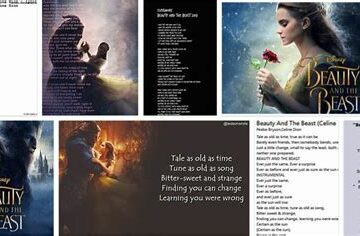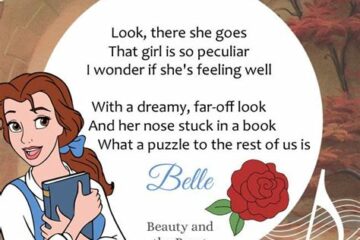
The Social Impact Of Disney Princesses
In a world where media plays a pivotal role in shaping cultural narratives, Disney princesses have emerged as influential characters that transcend mere entertainment. The social impact of these iconic figures extends far beyond the screen, shaping the perceptions and aspirations of young audiences since their inception. As we delve into the nuanced layers of how Disney princesses reflect and challenge societal norms, we will explore their effects on social dynamics and gender roles, alongside the consequences of prevalent stereotypes in Disney films. This article will also measure the significant influence of Disney princess merchandise, revealing how these beloved characters continue to inspire and reshape the narratives of childhood. Join us as we embark on a journey to understand the profound social implications of Disney princesses in contemporary society.
Understanding The Social Dynamics Of Disney Princesses
The world of Disney Princesses extends beyond mere entertainment; it plays a significant role in shaping cultural narratives and social dynamics. Through various characters and storylines, Disney has curated a unique constellation of female figures that reflect, challenge, and sometimes reinforce societal norms. The portrayals of these princesses offer insights into how gender roles are perceived and the social implications tied to them.
Disney Princesses often embody traditional values of kindness, beauty, and romance, but they also pave the way for discussions about empowerment and independence. Characters like Mulan and Moana depict women who defy conventional expectations, showcasing strength and bravery. These narratives influence young viewers’ understanding of gender identity and their place in a larger social context.
Moreover, the dynamics between these princesses and their supporting characters provide a rich tapestry for examining relationships, community, and societal expectations. Parents and educators can leverage this content to instill lessons about friendship, courage, and self-discovery, making the princesses a bridge to deeper conversations on societal roles and behaviors.
As these characters evolve with modern audiences, so do their stories. The shift from passive to active protagonists reflects changing social dynamics, encouraging children to aspire for more than what traditional roles suggest. The expanding lineup of Disney Princesses is not just about fairy tales; it’s about highlighting the diverse social fabric of today’s world.
How Disney Princesses Inspire Young Audiences Today
Disney princesses play a significant role in shaping young audiences’ perceptions and aspirations. Through their narratives, these characters convey essential values such as bravery, kindness, and determination, encouraging children to strive for their dreams. The representation of diverse princesses allows children to see themselves reflected in positive roles, fostering a sense of belonging and empowerment.
These characters often undergo transformative journeys, which resonate with young viewers navigating their own challenges. For instance, princesses like Moana and Mulan exemplify the importance of resilience and courage in the face of adversity. Such examples not only entertain but also teach valuable life lessons about self-discovery and the importance of following one’s heart.
Moreover, the themes presented in the stories of Disney princesses promote critical thinking about social norms and personal identity. By challenging traditional definitions of femininity and heroism, they inspire young audiences to embrace their unique qualities and advocate for their beliefs. This social impact is particularly profound when considering the long-lasting effects on self-esteem and identity in impressionable children.
The presence of strong female characters also encourages discussions around gender equality and social justice, allowing young audiences to question outdated stereotypes. As these princesses continue to evolve, they embody a broader spectrum of experiences that resonate with contemporary viewers, making their stories more relevant than ever.
Disney princesses are more than just animated figures; they serve as powerful sources of inspiration for young audiences, instilling values and shaping social perspectives that can lead to positive change in society.
The Social Consequences Of Stereotypes In Disney Films
Disney films, especially those featuring princesses, have become iconic in popular culture. However, they often perpetuate certain stereotypes that can have the social consequences for audiences, particularly children. These representations shape perceptions of gender roles, beauty standards, and social behaviors, influencing young viewers in various ways.
One of the most significant stereotypes is the portrayal of female characters as primarily concerned with romance and appearance. Many Disney princesses, such as Cinderella and Ariel, are depicted as passive characters whose stories revolve around finding love. This can send the message that a woman’s worth is tied to her relationship status and physical beauty, undermining the complexity and capability of women in real life.
Moreover, the lack of diverse representations can lead to a narrow understanding of gender and cultural identities. For instance, early Disney films predominantly feature white princesses, often sidelining characters from other racial and ethnic backgrounds. When cultural diversity is underrepresented or misrepresented, it may foster feelings of inadequacy among children from those backgrounds, impacting their self-esteem and social integration.
Disney’s portrayal of masculinity is also noteworthy; male characters are often depicted as strong and dominant, which can reinforce toxic masculinity. This dichotomy between the damsel in distress and the hero can shape expectations for young boys regarding how they should behave, potentially promoting aggressive or controlling behaviors.
In recent years, Disney has made efforts to address these issues by introducing more empowered, independent characters (such as Moana and Elsa) that challenge traditional stereotypes. Still, the impact of earlier films lingers, illustrating the importance of critically analyzing the social consequences of these portrayals in shaping societal norms.
Understanding these stereotypes’ implications is crucial, as they do not only affect children’s worldviews but also contribute to broader societal narratives. By recognizing and discussing the social implications of stereotypes in Disney films, we can encourage more positive representations that empower all children, regardless of their gender or background.
Transforming Gender Roles Through The Social Lens Of Disney Princesses
Disney princesses have long served as cultural icons, reflecting and, in some cases, challenging traditional gender roles. Through their narratives and character development, these princesses address the shifting dynamics of gender expectations in society.
In earlier Disney films, female characters often depicted a narrow view of femininity—emphasizing beauty, passivity, and the pursuit of romance as their primary goals. However, as cultural values have evolved, so too have the portrayals of these princesses, which document a significant transformation in gender roles.
The advent of characters like Merida from Brave and Moana from Moana highlights this shift. Both characters defy the stereotypical damsel in distress trope. Instead of waiting for a prince to save them, they embark on their own journeys of self-discovery. These narratives encourage young audiences to embrace individuality and assertiveness, showcasing that women are capable of taking charge of their destinies.
Moreover, the representation of strong female friendships and alliances in films like Frozen also emphasizes the importance of supportive relationships among women, rather than a singular focus on romantic love. This change underscores a broader message about the value of female empowerment and solidarity, reshaping how young girls perceive their roles in society.
Through this lens, it becomes evident that Disney princesses not only mirror societal attitudes towards gender roles but also play a crucial role in transforming these notions. By offering diverse and complex female characters, Disney has contributed to a more inclusive narrative that encourages young girls to break free from traditional confines and pursue their dreams unapologetically.
The ongoing dialogue around these character transformations signifies a significant opportunity for society to re-evaluate its perceptions of gender roles. Ultimately, Disney princesses serve as catalysts for change, helping to pave the way for future generations to envision a more egalitarian world.
Measuring The Social Impact Of Disney Princess Merchandise
The Disney Princess franchise extends far beyond animated films, enveloping a vast array of merchandise that shapes cultural perceptions and expectations. Measuring the social impact of this merchandise involves analyzing how it influences young minds, family dynamics, and societal standards. Disney Princess products, from dolls to clothing, often serve as tools for play and imagination, fostering creativity and identity exploration among children.
One key aspect of this merchandise’s social impact is its role in reinforcing or challenging gender stereotypes. For instance, while many products promote traditional feminine qualities associated with Disney Princesses, others aim to encourage empowerment and independence by featuring characters in active or leadership roles. This dichotomy plays a significant part in the messages children receive about gender roles and expectations.
Moreover, Disney Princess merchandise often encourages social interactions among children. For instance, when girls play with Disney Princess dolls, they frequently engage in storytelling and role-playing, which fosters social skills and emotional intelligence. These interactions can promote values like empathy, teamwork, and friendship, as children navigate relationships between characters.
Additionally, examining consumer behavior reveals how parents perceive and purchase Disney Princess products. Many parents view these items as pathways to positive childhood experiences, yet there’s a growing conversation about the pressures placed on children to conform to certain ideals of beauty and propriety linked to these princesses. This tension sheds light on the broader implications of commercialization in the context of childhood development.
To quantify the social impact, researchers often analyze sales data, consumer trends, and focus group feedback. Surveys might evaluate how children relate to their favorite princesses, how they aspire to embody certain traits, and how these aspirations influence their daily lives. The continued evolution of Disney Princess merchandise, including diverse representation and modern interpretations of classic tales, reflects a changing understanding of culture and identity.
Measuring the social impact of Disney Princess merchandise is multifaceted, encompassing the reinforcement of cultural norms, the sponsoring of social interaction, and parents’ perceptions and choices. As the franchise evolves, it will be essential to continuously assess how these products shape the values and aspirations of new generations.
Top 10 Disney Characters You Didn’t Know About
December 30, 2024A Deep Dive Into Disney Princesses And Their Stories
December 29, 2024The Meaning Behind Beauty And Beast Lyrics
December 29, 2024Why Beauty And The Beast Is A Timeless Disney Classic
December 29, 2024The Role Of Disney Princesses In Modern Culture
December 29, 2024Exploring The Themes In Beauty And The Beast Lyrics
December 28, 2024
Leave a reply Cancel reply
Recommended
-
Comparing Disney Princesses: Old Vs New
December 26, 2024 -
The Role Of Disney Princesses In Modern Culture
December 29, 2024 -
The Diversity Of Disney Princesses And What It Means
December 22, 2024









